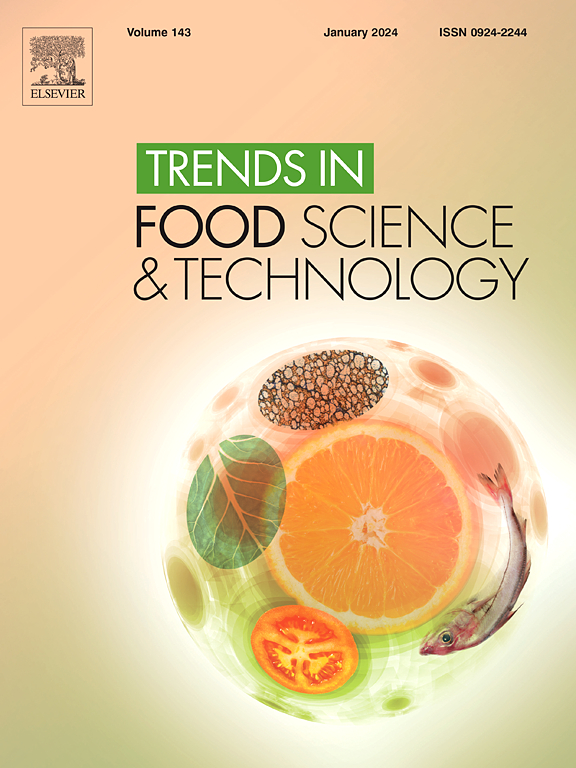A comprehensive overview of the principles and advances in electronic noses for the detection of alcoholic beverages
IF 15.1
1区 农林科学
Q1 FOOD SCIENCE & TECHNOLOGY
引用次数: 0
Abstract
Background
The rapid expansion of the alcoholic beverage market has emphasized the critical importance of ensuring product quality and safety. While traditional methods for alcohol detection are accurate, they often entail time-consuming procedures and require specialized equipment. In contrast, electronic nose (E-nose) technology has emerged as an effective mechanical olfaction system, offering advantages in terms of speed, sensitivity, and operational simplicity for assessing alcoholic beverages.
Scope and approach
This review begins with a comprehensive introduction to the history, architecture, and detection principle of the E-nose, followed by an enumeration of various E-nose systems used in alcoholic beverage detection. Subsequently, contemporary applications of E-nose technology in the detection of specific alcoholic beverages are examined, emphasizing its efficacy in identifying aromatic compounds and its integration with complementary technologies. By employing appropriate gas sensors, the E-nose can accurately replicate the human olfactory system, facilitating real-time classifying samples of alcoholic beverages into different groups.
Key findings and conclusions
The implementation of E-noses technology not only aids producers in controlling the quality of alcoholic beverage products but also enhances consumer safety in beverage selection. Moreover, the advancement of E-nose technology has contributed to the standardization and normalization within the alcohol industry. Finally, while the prospects for E-nose applications in alcohol detection are promising, several challenges persist, and the concluding section addresses future research for E-nose technology.
求助全文
约1分钟内获得全文
求助全文
来源期刊

Trends in Food Science & Technology
工程技术-食品科技
CiteScore
32.50
自引率
2.60%
发文量
322
审稿时长
37 days
期刊介绍:
Trends in Food Science & Technology is a prestigious international journal that specializes in peer-reviewed articles covering the latest advancements in technology, food science, and human nutrition. It serves as a bridge between specialized primary journals and general trade magazines, providing readable and scientifically rigorous reviews and commentaries on current research developments and their potential applications in the food industry.
Unlike traditional journals, Trends in Food Science & Technology does not publish original research papers. Instead, it focuses on critical and comprehensive reviews to offer valuable insights for professionals in the field. By bringing together cutting-edge research and industry applications, this journal plays a vital role in disseminating knowledge and facilitating advancements in the food science and technology sector.
 求助内容:
求助内容: 应助结果提醒方式:
应助结果提醒方式:


